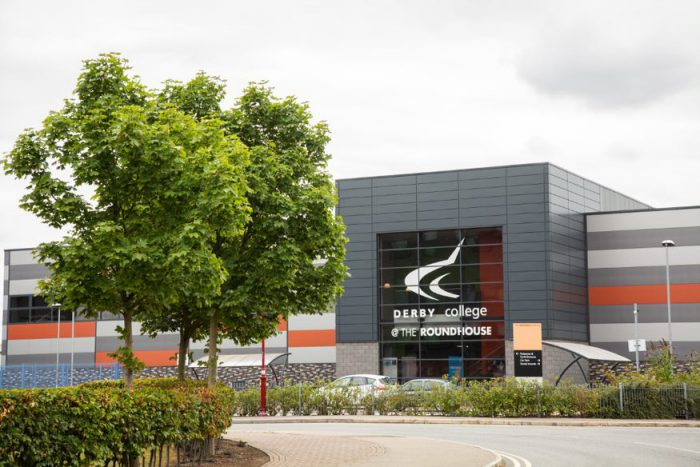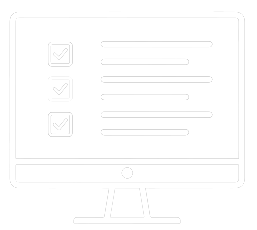Apprenticeship Painter and Decorator Level 2 Standard
This course meets the needs of students who have gained an apprenticeship position as a painter and decorator.
Course Summary

Course Information for Students
Who is this course for?
This course meets the needs of students who have gained an apprenticeship position as a painter and decorator. It allows them to develop the knowledge, skills and behaviours required for their employment.
The course is delivered in conjunction with the apprentice’s employer and support is given to ensure specific training is available to meet all needs.
Entry Requirements
You should have gained employment as an apprentice with a construction or building company, with the main focus of your role being on painting and decorating
You will need a minimum of GCSE grade D/3 or above in English and Maths and you will be required to undertake a basic skills test in literacy and numeracy at the College.
A Pass or above in a Construction-based course or an equivalent qualification is desirable, although not always required.
A commitment to your own learning and performance in a working environment is essential.
What will you learn?
KNOWLEDGE AND UNDERSTANDING
A painter and decorator will know and understand:
Work methods:
- The purpose of a range of equipment, tools and materials.
- The characteristics of materials and their reaction to atmospheric conditions.
- Safe and efficient methods of use, maintenance, movement, protection and storage of materials and equipment.
- Work hazards, safe working methods and appropriate safety requirements.
- How to work at height including the safe use of platforms, steps, ladders and scaffold.
Identify and respond to customer needs:
- The most appropriate products and use of colour in different settings.
- The company’s services.
- Methods of formal and informal communication.
- The uses of information technology in the workplace.
- Principles of costing, pricing and budgeting.
- Time, scheduling and costs associated with a project.
Construction industry and building methods:
- Key factors and systems of working in different sectors, such as occupied properties, health and education facilities where residents, patients and students may be present.
- Key differences between modern and traditional construction methods.
Product and specification information:
- Differences of each product type, for example: water-borne, solvent-borne and epoxy.
- Drying, curing and recoating times.
- The effect of colour in relation to good design and colour and contrast for people with impaired vision.
- The causes of common problems, how these can be prevented and how to correct them.
- Data sheets, Control of Substances Hazardous to Health sheets, method statements and risk assessments.
Preparation and application and removal:
- Difference in systems for new and pre-decorated surfaces.
- Types of preparation methods including removal of previous coatings and wallcoverings using hand tools, power tools and chemicals.
- Traditional and modern methods of making good surfaces.
- Different systems for metals, wood, plastic and factory finishes.
- Techniques of application by brush, roller, pressure assisted roller and spray application.
- Specialist decorative techniques, for example: graining, marbling and gilding.
- The skills of removal and application of wallcoverings.
SKILL
A painter and decorator will be able to:
Work methods:
- Prepare the work area safely, providing dust sheets and protection to furniture and adjacent surfaces.
- Identify hazards and risks in the workplace, ensuring a safe environment is maintained at all times.
- Select, use, maintain and store paint, tools, wallcoverings, spray equipment, steps, ladders and towers safely.
- Follow and maintain work procedures and method statements.
- Make the most efficient and effective use of resources, time and materials.
- React correctly using the correct method of actions and reporting in the event of an accident or incident.
Identify and respond to customer needs:
- Identify different industry sectors such as new construction, social housing, residential, refurbishment, commercial and heritage.
- Identify different building methods e.g. steel frame, reinforced concrete frame, traditional solid wall and cavity wall, block and dry-lined which determine the appropriate paint products and specifications.
Product and specification Information:
- Interpret specification documents and ensure correct preparation and systems are followed.
- Refer to manufacturers’ product information and data sheets to avoid errors.
- Advise clients about basic colour choices.
- Recommend appropriate products for differing scenarios and sectors.
- Identify and rectify common surface coating and wall covering problems.
- Interpret and use health and safety documents.
Preparation and application and removal:
- Identify substrates, hard wood, soft wood, ferrous and non- ferrous metal, factory finished etc.
- Prepare and strip surfaces using abrasives, chemical etchants, power sanders, heat and liquid methods.
- Understand and apply powder, two-pack, surfacers and resin fillers.
- Use different application methods: brush, roller, spray, power-assisted rollers and special effect tools.
- Wallpaper using techniques for the hanging of lining paper, standard papers, digital print and wide width including matching patterns, internal and external corners.
Behaviours
Painters and decorators will be expected to demonstrate:
- Their responsibilities towards their own and others’ safety in the workplace.
- A strong work ethic, being motivated, reliable and adaptable.
- Attention to detail, quality and continuous improvement.
- An awareness of the mission, aims, markets, products and services of the business.
- A customer-focused attitude.
- Effective communication in a team, with clients or with management.
How will you learn?
The apprenticeship will be delivered in the workplace and on-site.
What will you need to bring with you?
Your employer should provide you with Personal Protective Equipment.
How will you be assessed?
The apprenticeship will be completed through an end-point assessment (EPA) which will assess how the apprentice can apply the skills, knowledge and behaviours they have acquired during the programme. This will be through the following three assessments carried out after the gateway point of the apprenticeship:
- Knowledge test – consisting of multiple-choice questions on either a paper-based or computer-based platform.
- Skills test – assessed over three consecutive days by an Independent Assessor to holistically assess the skills, knowledge and behaviours acquired throughout the apprenticeship.
- Professional discussion – assessed by an Independent Assessor following the skills test, this discussion will consist of questions that clarify and probe the apprentice’s knowledge and skills based on the portfolio of evidence they have developed.
The EPA can only be taken after the conditions of the Assessment Gateway have been successfully achieved.
If not already achieved, the apprentice will have to attain Level 1 English and Maths and take the test for Level 2 prior to their end-point assessment.
Where next?
You can progress to supervisory, management or professional and technical courses and qualifications.
Who do you contact for more information?
For more information contact Derby College on 0800 0280289 or enquiries@derby-college.ac.uk
Is there any financial support available?
Course Information for Employers
Apprenticeship summary
KNOWLEDGE AND UNDERSTANDING
A painter and decorator will know and understand:
Work methods:
- The purpose of a range of equipment, tools and materials.
- The characteristics of materials and their reaction to atmospheric conditions.
- Safe and efficient methods of use, maintenance, movement, protection and storage of materials and equipment.
- Work hazards, safe working methods and appropriate safety requirements.
- How to work at height including the safe use of platforms, steps, ladders and scaffold.
Identify and respond to customer needs:
- The most appropriate products and use of colour in different settings.
- The company’s services.
- Methods of formal and informal communication.
- The uses of information technology in the workplace.
- Principles of costing, pricing and budgeting.
- Time, scheduling and costs associated with a project.
Construction industry and building methods:
- Key factors and systems of working in different sectors, such as occupied properties, health and education facilities where residents, patients and students may be present.
- Key differences between modern and traditional construction methods.
Product and specification Information:
- Differences of each product type, for example water-borne, solvent-borne and epoxy.
- Drying, curing and recoating times.
- The effect of colour in relation to good design and colour and contrast for people with impaired vision.
- The causes of common problems, how these can be prevented and how to correct them.
- Data sheets, Control of Substances Hazardous to Health sheets, method statements and risk assessments.
Preparation and application and removal
- Difference in systems for new and pre-decorated surfaces.
- Types of preparation methods including removal of previous coatings and wallcoverings using hand tools, power tools and chemicals.
- Traditional and modern methods of making good surfaces.
- Different systems for metals, wood, plastic and factory finishes.
- Techniques of application by brush, roller, pressure assisted roller and spray application.
- Specialist decorative techniques, for example graining, marbling and gilding.
- The skills of removal and application of wallcoverings.
SKILL
A painter and decorator will be able to:
Work methods:
- Prepare the work area safely, providing dust sheets and protection to furniture and adjacent surfaces.
- Identify hazards and risks in the workplace ensuring a safe environment is maintained at all times.
- Select, use, maintain and store paint, tools, wallcoverings, spray equipment, steps, ladders and towers safely.
- Follow and maintain work procedures and method statements.
- Make the most efficient and effective use of resources, time and materials.
- React correctly using the correct method of actions and reporting in the event of an accident or incident.
Identify and respond to customer needs:
- Identify different industry sectors such as new construction, social housing, residential, refurbishment, commercial and heritage.
- Identify different building methods e.g. steel frame, reinforced concrete frame, traditional solid wall and cavity wall, block and dry lined which determine the appropriate paint products and specifications.
Product and specification information:
- Interpret specification documents and ensure correct preparation and systems are followed.
- Refer to manufacturers’ product information and data sheets to avoid errors.
- Advise clients about basic colour choices.
- Recommend appropriate products for differing scenarios and sectors.
- Identify and rectify common surface coating and wall covering problems.
- Interpret and use health and safety documents.
Preparation and application and removal:
- Identify substrates, hard wood, soft wood, ferrous and non- ferrous metal, factory finished etc.
- Prepare and strip surfaces using abrasives, chemical etchants, power sanders, heat and liquid methods.
- Understand and apply powder, two-pack, surfacers and resin fillers.
- Use different application methods: brush, roller, spray, power-assisted rollers and special effect tools.
- Wallpaper using techniques for the hanging of lining paper, standard papers, digital print and wide width including matching patterns, internal and external corners.
Are they any entry requirements for my apprentice?
Your apprentice must be able to demonstrate they are working at or above a GCSE grade D/3 standard as a minimum requirement. They must also demonstrate a commitment to the apprenticeship.
What is required from the employer in the workplace?
An apprenticeship standard requires the employer to offer support, training and guidance so that the apprentice can record at least 20% of their time on the programme as training relating to the standard. This includes training both at College and on-site.
The apprentice will be required to build on the skills learnt in College while in the workplace and collect evidence in their portfolio to prove 20% of their time was covered by training, before they can take the end-point assessment.
Behaviours expected within the role
Painters and decorators will be expected to demonstrate:
- Their responsibilities towards their own and others’ safety in the workplace.
- A strong work ethic, being motivated, reliable and adaptable.
- Attention to detail, quality and continuous improvement.
- An awareness of the mission, aims, markets, products and services of the business.
- A customer-focused attitude.
- Effective communication in a team, with clients or with management.
What qualification will my apprentice gain?
- Level 2 Painter and Decorator Apprenticeship Standard
- Functional Skills in Maths and English
What will the assessment look like?
The apprenticeship will be completed through an end-point assessment (EPA) which will assess how the apprentice can apply the skills, knowledge and behaviours acquired during their programme. This will be through the following three assessments carried out after the gateway point of the apprenticeship:
- Knowledge test – this test will consist of multiple-choice questions on either a paper-based or computer-based platform.
- Skills test – assessed over three consecutive days by an Independent Assessor, this assessment will holistically assess the skills, knowledge and behaviours acquired throughout the apprenticeship.
- Professional discussion – assessed by an Independent Assessor following the skills test, this discussion will consist of questions that clarify and probe the apprentice’s knowledge and skills based on the portfolio of evidence they have developed.
The EPA can only be taken after the conditions of the Assessment Gateway have been successfully achieved and this has been agreed with the employer.
If they have not already achieved it, the apprentice will have to attain Level 1 English and Maths and take the test for Level 2 prior to taking their end-point assessment.
Will my apprentice need to come into college?
Your apprentice will need to come into College at least one day per week during the academic year and in line with term times.
Is there any specialist equipment required?
Your apprentice will need to be equipped with their own PPE such as boots, hi-vis and gloves. Tools will be supplied in College but not in the workplace.
What progression can my apprentice expect after completion of their apprenticeship?
The apprentice can progress to supervisory, management or professional and technical courses and qualifications.
What job roles will this apprenticeship be suitable for?
- Maintenance painter
- Site painter and decorator
- Self-employed painter and decorator
Will the college help me find an apprentice?
You may already have someone in your organisation or someone has come to you direct asking for an apprenticeship, but if you don’t we have a free recruitment service to help you hire the best candidate for your organisation from our talent pool and external advertising through social media and the national apprenticeship services website
Contact us
If you are an employer and you would like to know more, please email businessenquiries@derby-college.ac.uk or call 01332 387421
Career Information
This course could lead to one of these careers...
Painters and Decorators
£27636

DCG Success Stories

Peveril Decorators Ltd – Employer
Peveril Decorators Ltd continues long association with Derby College apprenticeships
Businesses have to invest in young people. They are the future.
Course Information Last Updated On: October 18, 2023 11:25 am


